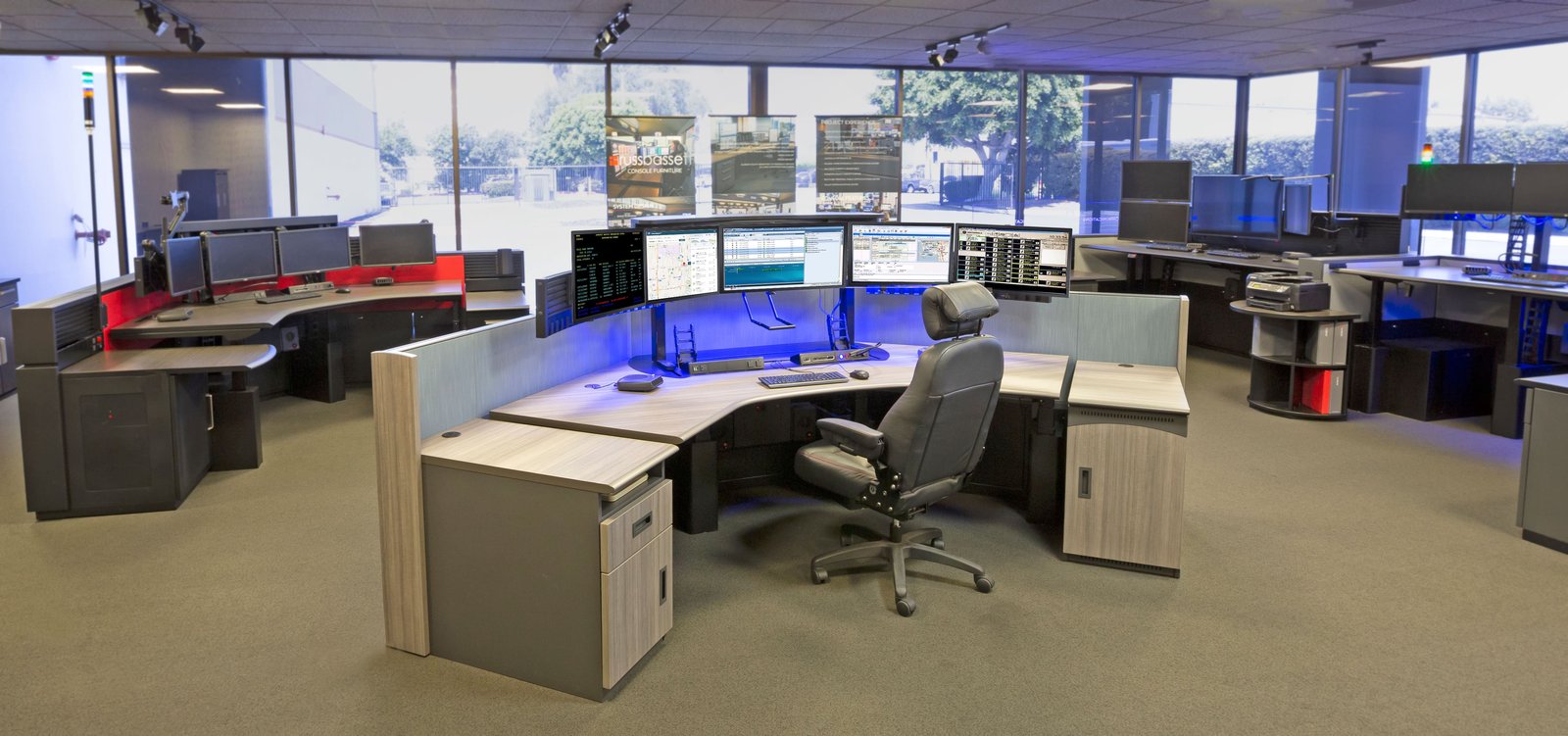User-Centered Design: A Holistic Approach to Console Ergonomics and Well-Being

User-centered design is more than just a buzzword; it’s vital to creating console furniture that meets the needs of mission-critical operators. Small tweaks can make a large difference in keeping operators comfortable, reducing back pain and strain, and keeping important equipment within reach.
In this installment of our three part series on ergonomics for the mission critical workplace, we’ll discuss the user experience considerations that should go into every organization’s console furniture decisions.
At the end of our article, you'll have the opportunity to download the full whitepaper, "Finding the Balance: Ergonomics for Multi-Monitor, Mission Critical Environments.
Ergonomic Design Considerations for the Console Furniture Designer
Designing modern consoles requires balancing ergonomic guidelines with design choices that best support the working environment. Conventional office ergonomic guidelines often fail to meet the unique needs of mission-critical operators who spend long shifts at work stations that house six or more monitors.

To successfully deliver the most healthful user experience, console furniture designers must consider ergonomic guidelines alongside unique user group needs. This is best accomplished with a blended approach to research and design:
- Thorough understanding of the value and trade-offs present when implementing BIFMA and HFES Ergonomic Guidelines in multi-monitor environments and the accompanying BIFMA UltimateTest for Fit.
- Awareness and understanding of other workplace health and safety guidelines including OSHA and Americans with Disabilities Act (ADA) requirements.
- Contemporary engagement with emerging health and wellness data as it relates to ergonomic standards and movement in the workplace.
User-Centered Design Considerations for the Agency
When considering different console solutions, it is important to remember that “good ergonomics” are not reflected by focusing on one console function or attribute such as “a neutral to downward gaze.” Rather, good ergonomic design takes into account everything related to overall operator adjustment, comfort, and focus.
This includes specific functional console attributes that support operators working in monitor intensive environments, including:
- Surface and monitor array adjustment allows operators to move from a seated to standing posture quickly and easily, achieving and maintaining comfortable and relatively equal monitor viewing distances to all monitors.

- An appropriately sized work surface that has room enough for operators to locate all primary tools and reference materials within the primary and secondary reach zones.
- Surface height adjustments that allow operators of all statures to achieve a comfortable sitting and standing posture.
- All console and integrated appliance controls are located within easy reach of the operator - within the primary and secondary reach zones.

- Operators can achieve consistent horizontal, vertical, and perpendicular viewing angles, as close to the ergonomic Guidelines as the multiple monitors will allow.
- Consoles should contain user-controlled temperature, heating and cooling, and lighting, allowing operators to adjust their workspace throughout the day to achieve optimal comfort and focus.

- Consoles allow surface and monitor positioning to accommodate open sightlines to video walls and collaboration with associates.
Choose the Best Consoles for Your Operators
Different console styles come with different ergonomic advantages and disadvantages. If you are looking to buy new consoles and would like to explore the pros and cons of the most popular styles, check out our recent blog post.